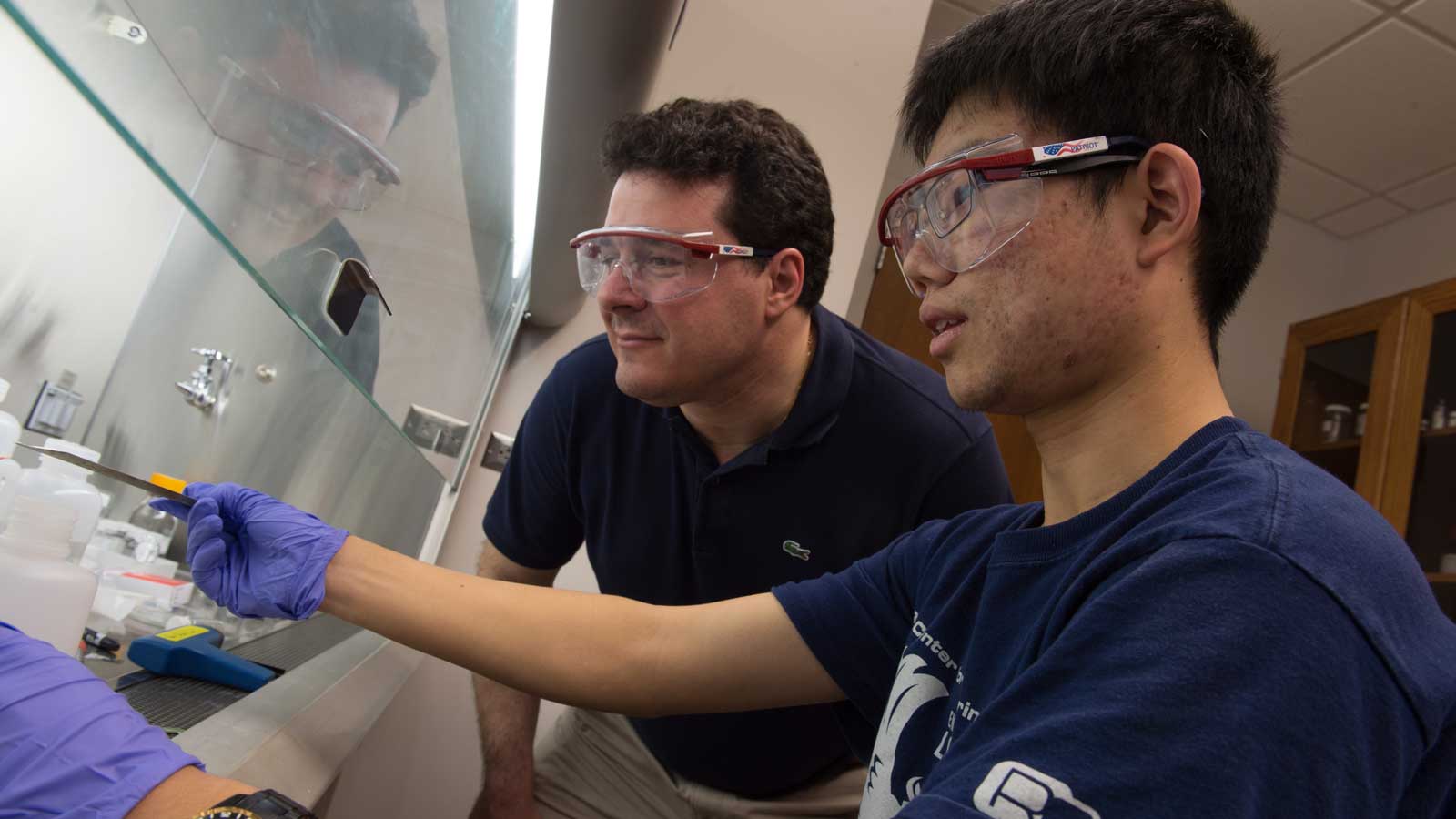This article originally appeared as part of "The future of Rice Engineering research" in the 2022 issue of Rice Engineering Magazine.
In his recent Chevron Lecture on Energy, Matteo Pasquali described how carbon nanotube (CNT) synthesis from hydrocarbons could be used to decarbonize, or, in his coinage, “de-COx-ify,” material manufacturing while producing clean-burning hydrogen.
After all, it’s carbon dioxide rather than carbon itself that leads to global warming. Along with fossil fuel use for transportation, materials manufacturing (“making stuff”) is among the leading sources of CO2 emissions. Carbon dioxide capture and storage is one way to reduce such emissions, but it’s expensive and generates a huge waste stream that must be managed and stored.
“The science is settled and the opportunity is clear. We already know how to make materials without carbon-dioxide emissions: split hydrocarbons and make clean hydrogen and useful carbon materials. Now it’s time to get started,” said Pasquali, the A.J. Hartsook Professor of Chemical and Biomolecular Engineering, and director of Carbon Hub.
“That carbon can be part of the solution is already credible,” he said. “Twenty years ago we could only make carbon black, which has limited use and small markets. Now we can make a range of carbon materials to the major CO2 offenders: metals and construction materials. We just have to figure out a reliable way to scale up the processes and make them less expensive.”
Carbon Hub was launched in 2019 with a $10 million commitment from Shell and additional commitments from Prysmian, Mitsubishi Corporation Americas, Chevron and Huntsman to change how the world makes materials and uses hydrocarbons.
Instead of burning them and releasing carbon dioxide, while mining ores that must be processed with further carbon-dioxide emissions, Carbon Hub is dedicated to the zero-emissions goal of splitting hydrocarbons and creating clean-burning hydrogen fuel and solid carbon materials.
“The concept is simple,” Pasquali said. “We can make solid and usable carbon materials from hydrocarbons, so no emissions are ever generated.”
At the moment, the global market for conventional carbon products is small. Carbon in the form of nanotubes could potentially replace structural materials such as steel, aluminum and carbon fibers.
“It’s no longer a dream. This is something many of us have been doing for 20 years in the nanotech field,” Pasquali said. “We already know how to make the materials and achieve properties. We don’t know yet how to do it efficiently. Our goal is to make this transition happen fast.”
The Saudi Arabian Oil Co. (Aramco) has joined Carbon Hub with a $10 million, five-year sponsorship commitment, dedicated to accelerating energy transition by developing sustainable uses of hydrocarbons. With its SABIC (Saudi Basic Industries Corporation) partner, Aramco and other Carbon Hub members will develop carbon materials to potentially displace emissions-intensive materials across broad industry sectors. “With the strong participation and representation of Aramco and SABIC,” Matteo Pasquali said, “we will span multiple steps in the carbon value chain, from feedstock production to material manufacturing.”

